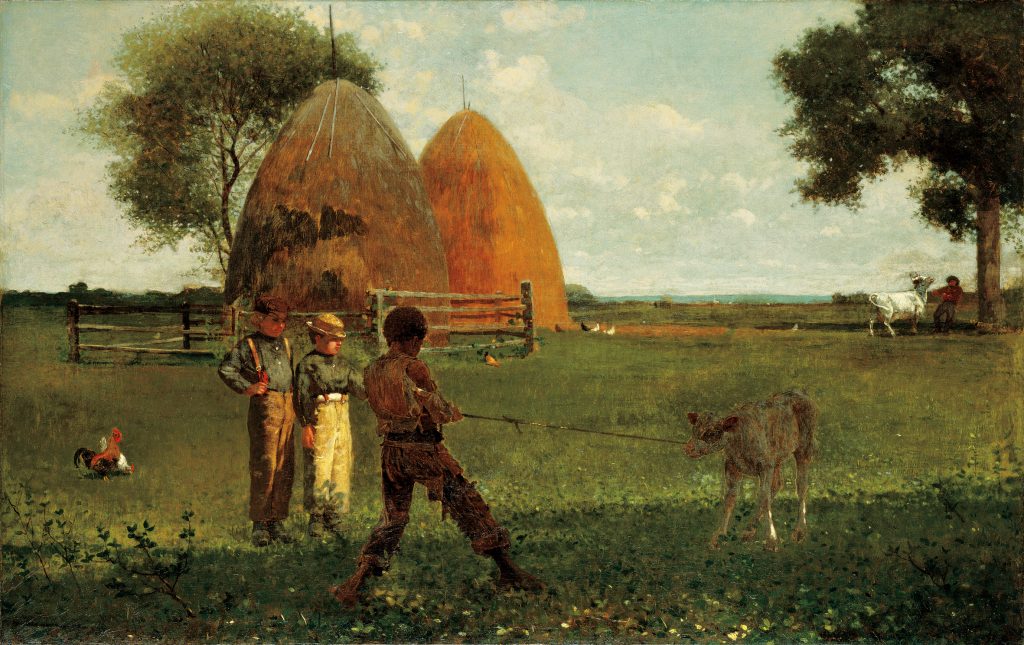Weaning the Calf (work of art)
Artwork Info
Key Ideas about this Work of Art
- This landscape painting was created during the Reconstruction era, after the American Civil War. During this time period, slavery ended and amendments were made to the Constitution that granted equal rights to formerly enslaved people.
- The Black boy in the painting is struggling to pull a calf away from its mother while two white boys watch. There is visual contrast between the young figures, not just in the color of their skin but in what they are doing and how they are dressed. A line of shadow also separates the boys.
- The two species of trees (elm and oak) in the background are symbols of freedom.
- Winslow Homer was a white artist who painted landscape scenes of daily life in 19th-century America. His paintings often focused on the struggles between people of different races and social classes.
- Homer is considered to be one of the greatest American painters of the 19th century. He is best known for his seascape paintings.
Learn More
This scene was painted during the Reconstruction era (1863 through 1877). The Civil War was over, and slavery had been abolished. Widespread racism continued, however, and social classes remained divided. It was a time of struggle for Black people who were trying to integrate into white-dominated society.
In many ways the painting portrays what was happening in America during Reconstruction. The Black boy is trying to pull a calf away from its mother, and the white boys stand together at a distance and watch him struggle. There is strong visual contrast between the young figures. The Black boy is working. He is barefoot and wears tattered clothing. The white boys are inactive and dressed in nicer clothing. The shadow in the foreground physically separates the boys. The two trees in the background are also symbolic. The elm tree represents freedom (a symbol dating from the American Revolution and the famous Liberty Tree in Boston). The oak tree represents the emancipation of enslaved people during the Civil War.
Winslow Homer was an American landscape painter and printmaker. Many people consider him to be one of the greatest American painters of the 19th century. Homer’s work explores themes of struggle and uncertainty, often between humans and nature. The landscapes he painted after the Civil War were often scenes of daily life in America’s countryside. He is best known for painting seascapes and marine (ocean-related) subjects.
tags: farm, landscape, force, children, animals
Additional Resources
Resources for Teachers
- View an online exhibition of Homer’s work.
- Read an article about the Reconstruction era.
- View a slideshow about the artist’s life and paintings.
Resources for Students
- Watch a video to see more paintings by Homer.
- View a similar painting and compare it to Weaning the Calf.
- Watch a video about the Reconstruction era.
- Read an article to learn the differences between oil painting and watercolor painting (two techniques that Homer used).

